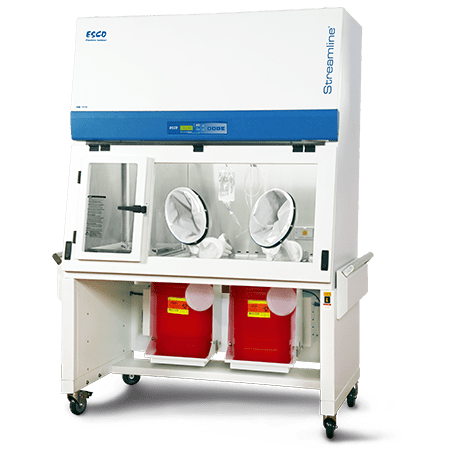RABS can be utilized in fill-finish areas. The equipment provides an enclosed environment which reduces the risk of contaminating the product, containers, closures, and direct contact surfaces. It grants superior protection than conventional cleanroom operations by providing a level of separation between operator and product.
The configurations of RABS include:
ISO Class 5 environment with unidirectional airflow
Rigid wall enclosure
Use of glove port/s, half suit/s, to access all areas of the enclosure during filling operations
Sterilization-In-Place (SIP) is preferred for contact parts (fluid pathways). Other materials coming from the outside environment must undergo autoclaving prior to RABS entry via aseptic transfer ports.
Since the equipment is open to the surrounding room, it is commonly located in an ISO Class 7 or better environment.
Moreover, RABS are further divided into two: open RABS (oRABS) or closed RABS (cRABS).
An oRABS can either have: a dedicated air handling system (active) which is completely independent from the room’s air supply; or a shared one with the cleanroom’s downflow (passive), which recycles air from the surrounding environment. Additionally, its barrier doors can be opened for operator intervention at defined risk stages of aseptic processes.
However, cRABS provide a higher level of contamination control since its barrier doors remain closed from the last bio-decontamination through the initial set-up. It also has a dedicated air handling system which will circulate within the barriers. cRABS also make use of gaseous decontamination system.
Related Products











